Fluminense Football Club is a Brazilian sports club founded in 1902 and based in Rio de Janeiro. As the oldest football club in the state, it competes in the Campeonato Brasileiro Série A (the top tier of Brazilian football) and the Campeonato Carioca (the Rio de Janeiro state league). The term "fluminense" refers to someone native to the state of Rio de Janeiro. The club is a significant part of the region's sporting landscape.
1902: Fluminense Football Club Foundation
In 1902, Fluminense Football Club was founded in Laranjeiras, Rio de Janeiro, becoming the oldest football club in the state.
1904: Kit Color Change
In 1904, during a trip to England, Fluminense changed its kit colors due to difficulties in sourcing the original colors, opting for the iconic burgundy, white, and green striped shirt.
1906: State Championship Title
In 1906, Fluminense won its first title, the state championship (Campeonato Carioca).
1906: Fluminense among founders of the Carioca Football Championship
In 1906, Fluminense, along with six other clubs, were responsible for creating the Carioca Football Championship.
1911: Formation of Flamengo's Football Team
In 1911, disagreement between Fluminense players led to the formation of Flamengo's football team. The Fla-Flu derby is considered one of the biggest in the history of Brazilian football.
1914: Brazil National Team Debut at Estádio de Laranjeiras
In 1914, the Brazil national football team played its first-ever match at Fluminense’s Estádio de Laranjeiras during the club’s 12th-anniversary celebrations. It was there that Brazil scored its first goal and won its first trophy.
1919: Flu's first match at the Laranjeiras Stadium
In 1919, Flu's first match at the Laranjeiras Stadium was the 4–1 victory over Vila Isabel, in the 1919 Carioca Championship, with the Tricolor goals having been scored by Harry Welfare (3) and Machado.
1919: Brazil national football team debut title
In 1919, the Brazil national football team won their debut title, in Fluminense's stadium.
1922: Club's Impressive Facilities
By 1922, Fluminense had 4,000 members, a stadium for 25,000 people, and facilities that impressed clubs in Europe.
1922: Expansion of Laranjeiras Stadium Capacity
In 1922, the capacity of Laranjeiras Stadium was expanded to 25,000 people.
June 1925: Record for paying audiences at Laranjeiras Stadium
On 14 June 1925, the record for paying audiences at Laranjeiras Stadium was set in the Fluminense 3-1 Flamengo match, with 25,718 spectators.
1927: Fluminense asked for the annulment of the 1927 title
In 1927, having won the title on the field, Fluminense asked for its annulment for having failed to comply with the regulations, by including two substitutes in its ranks, in a letter sent to AMEA, which resulted in the subsequent annulment of the title.
1928: Vulcain Cup dispute with a full stadium
In 1928, Fluminense had the Vulcain Cup dispute, with the stadium full and over 2,000 chairs being placed on the athletics track to accommodate the public present.
1933: First match of Silvio Santos Derby
The Derby dates back to 1933, in a friendly match that marked both Fluminense's first match as a professional team and Corinthians' first inter-state match as a professional.
1940: The 1940 competition was interrupted with Fluminense and Flamengo in the lead
In 1940 the competition was interrupted with Fluminense and Flamengo in the lead, without the CBD making the title official, however, the clubs and newspapers at the time considered the result definitive and declared the Fluminense and Flamengo as the legitimate champions of the competition.
1949: Giants' Derby decisions Carioca Championship in 1949
Giants' Derby, between Fluminense and Vasco da Gama, had several decisions Carioca Championship, like the one in 1949.
1949: Olympic Cup from the International Olympic Committee
In 1949, Fluminense became the first football club to receive the Olympic Cup from the International Olympic Committee for its pioneering role in sports.
1950: Fluzao.info tracked average paying public statistics at the principal classicos of Fluminense
According to the fluzao.info site, the average paying public at the principal classicos of Fluminense played in the Estádio do Maracanã is 60,107 against Flamengo, 43,735 against Vasco da Gama, 34,359 against Botafogo, 25,127 against America and 22,527 against Bangu (1950-2010).
1950: CBD decides to hold the International Champions Club Tournament
In 1950, in the context of the World Cup held in the country, CBD, accompanied by FIFA and IFAB, decided to hold a competition that pitted the champion clubs from the main FIFA-affiliated countries against each other, thus creating the International Champions Club Tournament, better known as Copa Rio.
1950: Construction of Maracanã Stadium
In 1950, the Maracanã was built, the largest stadium in the world at that time, and which became the main stadium for Fluminense's games.
1950: Maracanã served as home ground for Rio de Janeiro clubs
Since its construction for the 1950 World Cup, the Maracanã has primarily served as the home ground for the four biggest Rio de Janeiro clubs.
1951: Carioca Championship Win
In 1951, Fluminense won the Carioca championship, which meant that the team qualified for the 1952 Copa Rio.
1951: First Edition of Copa Rio
In 1951, the first edition of the International Champions Club Tournament, better known as Copa Rio, took place, being won by Palmeiras.
1952: Fluminense won the 1952 Copa Rio
In 1952 Fluminense won the Copa Rio, for many the most important in its history, at the Maracanã Stadium.
1952: Copa Rio Title
In 1952, Fluminense won the Copa Rio, a title regarded by the club as a world title.
1952: Qualification for Copa Rio
In 1952, Fluminense's Carioca championship win, qualified the team for the Copa Rio.
1956: Giants' Derby decisions Carioca Championship in 1956
Giants' Derby, between Fluminense and Vasco da Gama, had several decisions Carioca Championship, like the one in 1956.
1957: Rio-São Paulo Tournament Title
In 1957, Fluminense won the Rio-São Paulo Tournament title, establishing itself regionally.
1960: Rio-São Paulo Tournament Title
In 1960, Fluminense won the Rio-São Paulo Tournament title, establishing itself regionally.
December 1963: Record attendance at Maracanã for a Fluminense match
On 15 December 1963, a record attendance of 194,603 people was recorded at Maracanã stadium for a derby between Fluminense and Flamengo, setting the stadium's record for a match between clubs.
1963: More than 194,000 people attended a match between Flamengo and Fluminense
In 1963, more than 194,000 people attended a match between Flamengo and Fluminense at the Maracanã, Rio Championship final.
1965: Maracanã was officially completed
In 1965, 17 years after construction began, the Maracanã was officially completed.
1970: Giants' Derby decisions Carioca Championship in 1970
Giants' Derby, between Fluminense and Vasco da Gama, had several decisions Carioca Championship, like the one in 1970.
1970: Notable supporters of Fluminense include 1970 FIFA World Cup winners Gérson and Carlos Alberto Torres
In 1970 FIFA World Cup winners Gérson and Carlos Alberto Torres are listed among the notable supporters of Fluminense.
1970: Fluminense won its first Brazilian Championship in 1970
In 1970, Fluminense won its first Brazilian Championship at the Maracanã Stadium.
1970: First National Title
In 1970, Fluminense won its first national title, the Brazilian Championship, overcoming major opponents such as Santos, Palmeiras, and Cruzeiro.
1970: Brazilian Championship Title
In 1970, Fluminense won the Brazilian Championship.
1972: Giants' Derby decisions Carioca Championship in 1972
Giants' Derby, between Fluminense and Vasco da Gama, had several decisions Carioca Championship, like the one in 1972.
1975: Giants' Derby decisions Carioca Championship in 1975
Giants' Derby, between Fluminense and Vasco da Gama, had several decisions Carioca Championship, like the one in 1975.
1975: State Championship Title
In 1975, the "Tricolor Machine" won the state championship
1975: Fluminense was twice champion of Carioca in 1975
In 1975, the Tricolor Machine was twice champion of Carioca (1975–76), led by Roberto Rivellino, at the Maracanã Stadium.
1976: Giants' Derby decisions Carioca Championship in 1976
Giants' Derby, between Fluminense and Vasco da Gama, had several decisions Carioca Championship, like the one in 1976.
1976: State Championship Title
In 1976, the "Tricolor Machine" won the state championship
1980: Giants' Derby decisions Carioca Championship in 1980
Giants' Derby, between Fluminense and Vasco da Gama, had several decisions Carioca Championship, like the one in 1980.
1983: Fluminense was three-time Rio champion against Flamengo (1983–85)
In 1983, Fluminense was three-time Rio champion against Flamengo (1983–85) at the Maracanã Stadium.
1983: State Championship Win
In 1983, Fluminense won the state championship.
1984: Brazilian Champions Again
In 1984, Fluminense became Brazilian champions again, playing in the final against Rio rivals Vasco da Gama.
1984: Fluminense was Brazilian champion over its rival Vasco da Gama, in 1984
In 1984, Fluminense was Brazilian champion over its rival Vasco da Gama, at the Maracanã Stadium.
1984: Fluminense won the 1984 Campeonato Brasileiro Série A against Vasco da Gama
The Giants' Derby is named for matches such as the final for the 1984 Campeonato Brasileiro Série A, which was won by Fluminense against Vasco da Gama.
1985: State Championship Win
In 1985, Fluminense won the state championship.
1985: Draws marked the 1985 Copa Libertadores Giants' Derby between Fluminense and Vasco da Gama
In 1985, the Copa Libertadores Giants' Derby between Fluminense and Vasco da Gama had two draws.
1992: Copa do Brasil Final Appearance
In 1992, Fluminense reached the final of the Copa do Brasil for the first time but lost to Internacional in a penalty shootout.
1993: Giants' Derby decisions Carioca Championship in 1993
Giants' Derby, between Fluminense and Vasco da Gama, had several decisions Carioca Championship, like the one in 1993.
1994: Giants' Derby decisions Carioca Championship in 1994
Giants' Derby, between Fluminense and Vasco da Gama, had several decisions Carioca Championship, like the one in 1994.
1995: Fluminense was Carioca champion in 1995
In 1995, Fluminense was Carioca champion in 1995 with Renato Gaúcho's belly goal, against Romário's Flamengo, at the Maracanã Stadium.
1996: Relegation from Brasileirão Série A
In 1996, a disastrous campaign led to Fluminense's relegation from Brasileirão Série A, but off-field political manoeuvres allowed them to remain in the top league.
1998: Relegation to Série C
In 1998, Fluminense was relegated from Série B to Série C.
1999: Série C Championship Win
In 1999, Fluminense won the Série C championship and were to be promoted to Série B.
2000: Good Campaign in Serie A
In 2000, Fluminense had a good campaign in the Serie A, finishing in the top four.
2000: Participation in Copa João Havelange
In 2000, Fluminense was invited to take part in Copa João Havelange, a championship that replaced the traditional Série A.
2000: Maracanã planned renovations for the 2000 FIFA Club World Cup
In 2000, following its 50th anniversary and aiming to hold the 2000 FIFA Club World Cup in Brazil, the Maracanã stadium underwent renovations which would increase its full capacity to around 103,000.
2001: Good Campaign in Serie A
In 2001, Fluminense had a good campaign in the Serie A, finishing in the top four.
2001: Retention in Série A
In 2001, it was decided that all clubs which took part in Copa João Havelange's so-called Blue Group should be kept in Série A.
2002: Good Campaign in Serie A and Campeonato Carioca Title
In 2002, Fluminense had a good campaign in Serie A, finishing in the top four and winning the Campeonato Carioca.
2003: Giants' Derby decisions Carioca Championship in 2003
Giants' Derby, between Fluminense and Vasco da Gama, had several decisions Carioca Championship, like the one in 2003.
2003: Last official match at Laranjeiras Stadium
In 2003, the last time an official match for Fluminense's main team took place at Laranjeiras Stadium, where Flu drew 3–3 with Americano, in the Carioca Championship.
2005: Campeonato Carioca and Taca Rio Wins
In 2005, Fluminense won the Campeonato Carioca and the Taca Rio, finishing fifth in the Brasileirao.
2005: Closure of Maracanã for renovations
The Maracanã stadium was closed for nine months between 2005 and 2006 for renovations.
2006: São Paulo's Brazilian championship
In 2006, Ramalho won the title three times in a row with São Paulo from 2006 to 2008.
2006: Closure of Maracanã for renovations
The Maracanã stadium was closed for nine months between 2005 and 2006 for renovations.
January 2007: Maracanã reopened with an all-seated capacity of 87,000
In January 2007, the Maracanã reopened with an all-seated capacity of 87,000 after nine months of closure between 2005 and 2006.
2007: Fluminense won the 2007 Brazil's Cup
In 2007 Fluminense won the 2007 Brazil's Cup, at the Maracanã Stadium.
2007: Copa do Brasil Win and Copa Libertadores Admission
In 2007, Fluminense won the Copa do Brasil beating Figueirense in the final, and was admitted to the Copa Libertadores again after 23 years. Thiago Neves won the Golden Ball for the league's best player
2007: Fluminense won the 2007 Copa do Brasil
In 2007, Fluminense won the Copa do Brasil, which led to the health insurance company Unimed investing heavily in signing players like Darío Conca and Fred.
2007: Copa do Brasil Title
In 2007, Fluminense won the Copa do Brasil.
2008: Copa Libertadores Runner-Up
In 2008, Fluminense reached the Copa Libertadores finals, ultimately losing to LDU Quito on penalties after a 5–5 draw on aggregate.
2008: L.D.U. Quito defeated Fluminense in the 2008 Copa Libertadores final
In 2008, L.D.U. Quito defeated Fluminense in the Copa Libertadores final, starting a strong international rivalry between the two teams.
2008: São Paulo's Brazilian championship
In 2008, Ramalho won the title three times in a row with São Paulo from 2006 to 2008.
2009: Sensational Escape from Relegation and Copa Sudamericana Finals
In 2009, Fluminense had a sensational escape from relegation and reached the Copa Sudamericana finals, losing to LDU Quito.
2010: Fluzao.info tracked average paying public statistics at the principal classicos of Fluminense
According to the fluzao.info site, the average paying public at the principal classicos of Fluminense played in the Estádio do Maracanã is 60,107 against Flamengo, 43,735 against Vasco da Gama, 34,359 against Botafogo, 25,127 against America and 22,527 against Bangu (1950-2010).
2010: Brazilian Championship Title
In 2010, Fluminense won the Brazilian Championship.
2010: Major expedition project started at Maracanã
In 2010, a major expedition project was started at the Maracanã for the 2014 FIFA World Cup and the 2016 Olympics and Paralympics, leading to the demolition of the original stand and a reduction in capacity.
2011: Third-Place Finish in Serie A
In the 2011 season, Fluminense finished third in the Serie A and qualified for the following year's Copa Libertadores.
May 2012: Campeonato Carioca Title
In May 2012, Fluminense won the Campeonato Carioca, beating Rio rivals Botafogo 5–1 on aggregate.
2012: Brazilian Championship Title
In 2012, Fluminense won the Brazilian Championship.
December 2013: Fluminense avoided relegation due to rivals fielding ineligible players
In December 2013, Fluminense mathematically relegated to Série B after a 2–1 victory away to Bahia in the last round of the Série A. However, Portuguesa and Flamengo fielded ineligible players, thus allowing Fluminense to stay in Série A.
2013: Odebrecht managed the Maracanã stadium
From 2013 onwards, the Brazilian conglomerate Odebrecht managed the Maracanã stadium.
2014: Major expedition project started for the 2014 FIFA World Cup
For the 2014 FIFA World Cup a major expedition project was started in 2010 at the Maracanã.
2015: Fluminense underwent a remodeling due to financial constraints
From 2015 onwards, Fluminense underwent a remodeling, with the departure of some of its main players. The club's youth categories became fundamental for its maintenance in the first division in the following years, and the sale of young players became the club's main source of income.
2016: Flamengo and Fluminense managed the Maracanã stadium
Although clubs have kept the stadium in good condition since 2016 and covered its maintenance costs.
2016: Major expedition project started for the 2016 Olympics and Paralympics
For the 2016 Olympics and Paralympics, a major expedition project was started in 2010 at the Maracanã.
2019: Government canceled contracts with Odebrecht
In 2019 the government canceled contracts with Odebrecht and Flamengo and Fluminense created a joint company to manage Maracanã.
2019: Fluminense hired Fernando Diniz, a young coach with innovative ideas.
In 2019, Fluminense hired Fernando Diniz, a young coach with innovative ideas within Brazilian football, but political conflicts within the club forced him out.
2020: Fred returned to Fluminense and the team qualified for Copa Libertadores
In 2020, Fluminense brought back Fred, and qualified for the Copa Libertadores under Odair Hellmann's tutelage.
2022: Fluminense achieved its best place in the Brazilian Championship in the last ten years
In 2022, Fluminense achieves its best place in the Brazilian Championship in the last ten years, a third place, with an offensive team that is noted for its fluidity and ball possession. The team also won the Campeonato Carioca for a second year in a row.
2022: Fluminense won the Campeonato Carioca and Abel Braga retired
In 2022, Fluminense won the Campeonato Carioca against rivals Flu, their first trophy in a decade. Abel Braga retired from his coaching career, and Fluminense decided to give Fernando Diniz another chance.
October 4, 2023: Data correct as of October 4, 2023
The information is correct as of October 4, 2023
2023: Fluminense Ranked First in Copa Libertadores group stage
In 2023 Libertadores, Fluminense falls into group D, along with River Plate (Argentina), The Strongest (Bolivia) and Sporting Cristal (Peru), despite being considered one of the most difficult groups in the edition, Fluminense ranks first, inflicting the biggest defeat in River Plate's history in the competition, 5–1 at Maracanã.
2023: Fluminense won the 2023 Copa Libertadores
In this century he won the 2007 Brazil's Cup and the 2023 Copa Libertadores.
August 2024: Silvio Santos Derby was named after the television host
The fixture's name was given on 17 August 2024, after the Brazilian television host Silvio Santos died on the same day. Santos was a supporter of both clubs.
2024: Recopa Sudamericana Title
In 2024, Fluminense secured the Recopa Sudamericana title.
Mentioned in this timeline
Serie A is the top-tier professional football league in Italy...
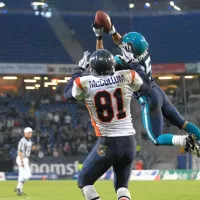
Football encompasses a variety of team sports centered on kicking...
Argentina officially the Argentine Republic is located in the southern...
Bolivia a landlocked country in central South America boasts diverse...
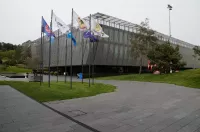
FIFA or the F d ration Internationale de Football Association...
Brazil is the largest country in South America ranking fifth...
Trending

12 days ago James Gunn Plans Superman Sequel Shooting Soon; Teases 'Peacemaker' Role in DCU.
12 days ago Motorcycle crash in Beloit on Cranston Road: Police investigate single-vehicle incident.

12 days ago Zion: Influencers' Storm, Hidden Trail & East Mesa Hike, Views and Fewer Crowds
12 days ago Qatar Airways and Accenture partner for AI-driven aviation excellence, creating 'AI Skyways'.

12 days ago Ketel Marte's Absence and Day Off Requests Cause Frustration Among Diamondbacks Teammates
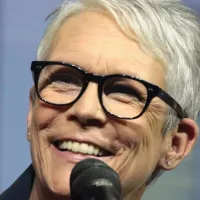
12 days ago Jamie Lee Curtis Celebrates 'Freakier Friday' with Fan Event and Lookalike Screening
Popular
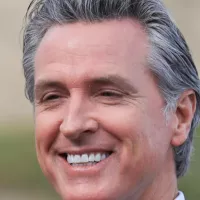
Gavin Newsom is an American politician and businessman currently serving...
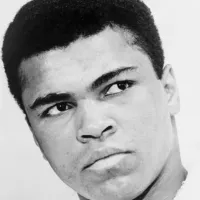
Muhammad Ali nicknamed The Greatest was an iconic American professional...

Jupiter is the fifth and largest planet from the Sun...
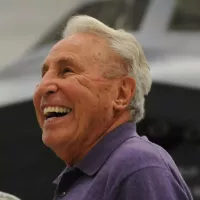
Lee Corso is an American sports broadcaster and college football...

George Soros is a prominent American investor and philanthropist As...
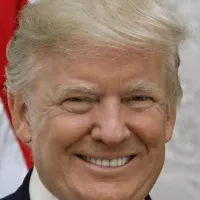
Donald John Trump is an American politician media personality and...